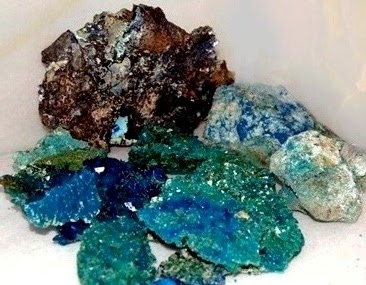What do we know about metallurgy? Metallurgy is branch of science that deals with the procedures used when extracting metals from ores, purifying and alloying them. This also involves the study of the procedures used when making objects out of metals. Yet, to be able to understand fully all about metallurgy, it would be better to have a short glimpse of the history of metallurgy.
One of the oldest processes of applied science is the process of metallurgy. Its history would give us a good view of how the process developed and its association with metals. The history of metallurgy occurred around 7,000 BC which what they call the age of copper. It is the period between the Stone Age and the Bronze Age which could also be considered the turning point between Stone to Metal.
The first process was purely accidental when the copper enter into the fireplace campfire hot. Obviously, the copper melted and when it cooled people noticed the change of its shape. The development of the process was also contributed by the magic of the fire. We could learn from the history of metallurgy that people in the old days relied on the fire for the metal processing
In the 2800 BC comes the Bronze Age which is another development in metallurgy. People have become brilliant that they made an alloy of copper and tin since both was commonly found in the same ore. Which results bronze and bronze has become a commodity was used for the weapons of the armies as well as used as money for trade.
In the 1500 BC, another breakthrough was found in metallurgy. It is the discovery of iron which was considered the most abundant metal in the earth but was difficult to extract.
By this then, in the 11th century, people pushed their luck and tried to heat the iron with charcoal in such a way that the carbon from the charcoal can be transferred to the iron.
With this, the metal would be hardened and the Age of Steel came. Yet, iron has become a continuous challenge to most metallurgists since it’s very hard which can only be hammered but can’t be melted. In the 513 BC, Chinese were able to think of a furnace strong enough to heat iron.
By this then, in the 11th century, people pushed their luck and tried to heat the iron with charcoal in such a way that the carbon from the charcoal can be transferred to the iron.
With this, the metal would be hardened and the Age of Steel came. Yet, iron has become a continuous challenge to most metallurgists since it’s very hard which can only be hammered but can’t be melted. In the 513 BC, Chinese were able to think of a furnace strong enough to heat iron.
Metals nowadays are a commodity. From the buildings, the houses, to the littlest tools we use everyday; the magic of metals is involved. Without them, everything wouldn’t be that easy. One after another, metals have developed and evolved. Over the years, people never stopped adding bits to the history of metallurgy making way for the metals to be obviously useful and one of the most important things in our daily lives nowadays.
Video Metallurgy In Mining Old Kennecott Smelter Utah











